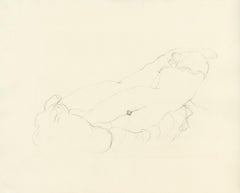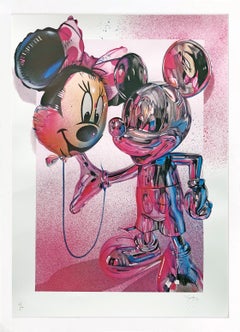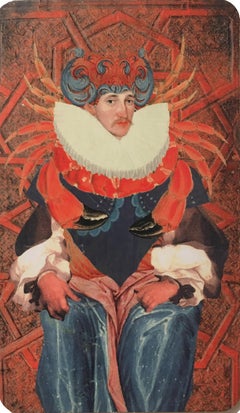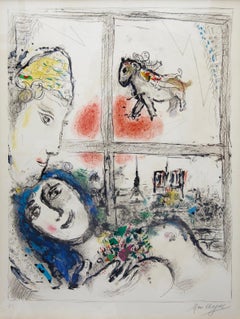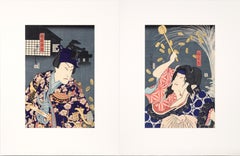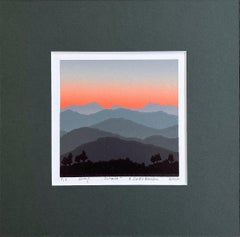Paper Figurative Prints
Early 1900s Vienna Secession Paper Figurative Prints
Paper
2010s Street Art Paper Figurative Prints
Paper, Screen
2010s Contemporary Paper Figurative Prints
Digital, Archival Ink, Archival Paper, Archival Pigment
1960s Modern Paper Figurative Prints
Archival Paper, Lithograph
1860s Edo Paper Figurative Prints
Paper, Ink, Woodcut
2010s Contemporary Paper Figurative Prints
Paper, Linocut
1920s Edo Paper Figurative Prints
Paper, Ink, Woodcut
Early 19th Century Edo Paper Figurative Prints
Paper, Ink, Woodcut
2010s Surrealist Paper Figurative Prints
Paper, Color
1980s Surrealist Paper Figurative Prints
Etching, Paper
2010s Surrealist Paper Figurative Prints
Paper, Color
1980s Modern Paper Figurative Prints
Paper, C Print
21st Century and Contemporary Contemporary Paper Figurative Prints
Paper, Woodcut
Late 20th Century Contemporary Paper Figurative Prints
Paper, Screen
Mid-20th Century Modern Paper Figurative Prints
Lithograph, Paper
1970s Pop Art Paper Figurative Prints
Paper, Screen
1980s Other Art Style Paper Figurative Prints
Paper, Screen
Mid-20th Century Cubist Paper Figurative Prints
Paper, Ink, Etching
1970s Surrealist Paper Figurative Prints
Ink, Laid Paper, Lithograph
2010s Contemporary Paper Figurative Prints
Digital, Archival Paper, Archival Pigment
2010s Contemporary Paper Figurative Prints
Paper
1970s Pop Art Paper Figurative Prints
Paper, Ink
Late 19th Century Modern Paper Figurative Prints
Paper, Etching
1960s Expressionist Paper Figurative Prints
Paper, Lithograph
1890s Post-Impressionist Paper Figurative Prints
Lithograph, Paper
1970s Pop Art Paper Figurative Prints
Paper, Ink, Screen
2010s Pop Art Paper Figurative Prints
Archival Paper, Digital
1980s Pop Art Paper Figurative Prints
Paper, Lithograph
20th Century Modern Paper Figurative Prints
Paper, Etching
2010s Street Art Paper Figurative Prints
Archival Paper, Digital
1940s Other Art Style Paper Figurative Prints
Paper, Lithograph, Offset
1880s Modern Paper Figurative Prints
Paper, Lithograph
1950s Modern Paper Figurative Prints
Archival Paper, Lithograph
21st Century and Contemporary Contemporary Paper Figurative Prints
Paper, Screen
2010s Contemporary Paper Figurative Prints
Lacquer, Photographic Paper
Mid-20th Century Post-Impressionist Paper Figurative Prints
Lithograph, Paper
2010s Contemporary Paper Figurative Prints
Paper
1960s Surrealist Paper Figurative Prints
Paper, Ink
1910s Art Nouveau Paper Figurative Prints
Paper, Ink
Early 2000s Abstract Paper Figurative Prints
Archival Ink, Archival Paper, Linocut, Archival Pigment
Early 2000s Contemporary Paper Figurative Prints
Watercolor, Paper, Drypoint
1980s Contemporary Paper Figurative Prints
Rice Paper, Laid Paper, Woodcut
2010s Contemporary Paper Figurative Prints
Paint, Paper, Giclée
1880s Edo Paper Figurative Prints
Paper, Ink, Woodcut
Late 20th Century Realist Paper Figurative Prints
Paper, Lithograph
1850s Modern Paper Figurative Prints
Paper, Lithograph
21st Century and Contemporary Contemporary Paper Figurative Prints
Archival Paper
Early 1900s Vienna Secession Paper Figurative Prints
Paper
1970s American Impressionist Paper Figurative Prints
Paper, Lithograph
Mid-20th Century Modern Paper Figurative Prints
Lithograph, Paper
1980s Contemporary Paper Figurative Prints
Paper, Lithograph
1930s Surrealist Paper Figurative Prints
Etching, Paper
2010s Surrealist Paper Figurative Prints
Paper, Color
1970s Contemporary Paper Figurative Prints
Lithograph, Paper
21st Century and Contemporary Contemporary Paper Figurative Prints
Laid Paper, Screen
1870s Edo Paper Figurative Prints
Paper, Ink, Woodcut
21st Century and Contemporary Other Art Style Paper Figurative Prints
Paper, Etching
2010s Pop Art Paper Figurative Prints
Acrylic, Newsprint
Mid-20th Century Paper Figurative Prints
Paper, Woodcut
1930s Cubist Paper Figurative Prints
Laid Paper, Etching
